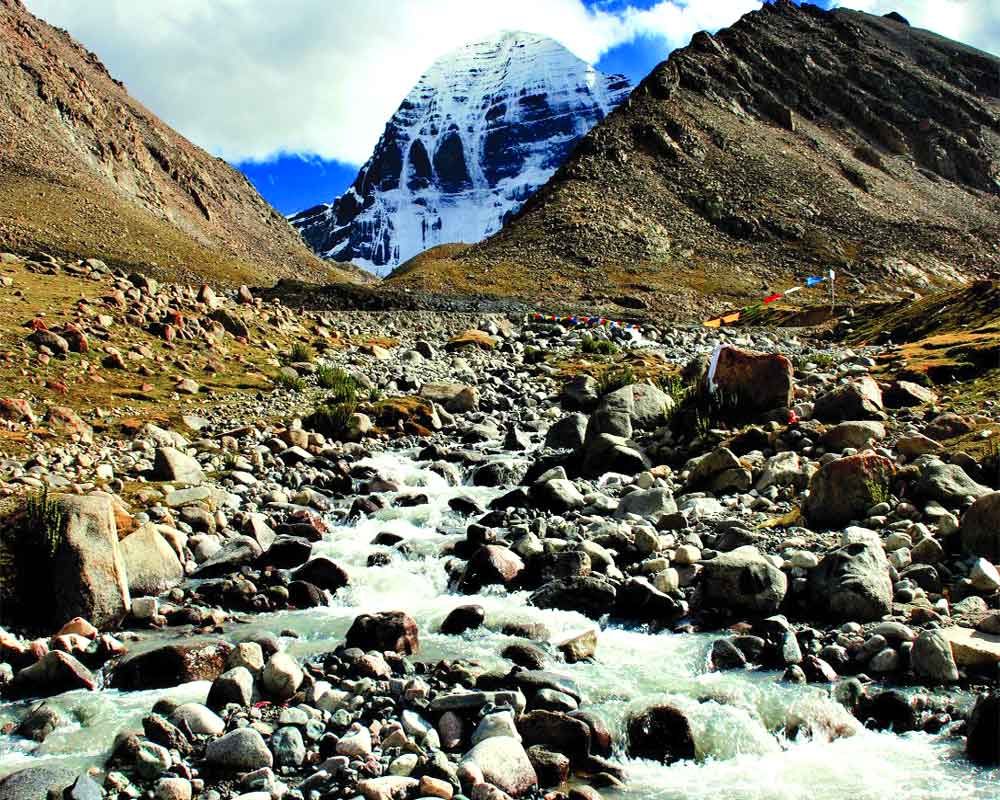An investigation by scientists of Roorkee-based National Institute of Hydrology (NIH) has concluded that as “per current scenario” Mansarovar Lake in Tibet is not the origin of the Ganga River and there is no connectivity between the two water systems.
Hindu religious texts believe that the Ganga descended from the locks of Shiva, and therefore, has a connection with Kailash Mansarovar. There is also perception that Gomukh, (snout of the Gangotri Glacier) is the source of the Ganga. But the present study has refuted claim by China as well some foreign scientists that the Ganga emanated from Mansarovar Lake.
Considering the hydrological and religious significance in India of the Ganga and the Manasarovar Lake, the present study was initiated at the behest of then Union Water Resources Minister Uma Bharti in 2015 to investigate the data related to the place of origin of the Gangas (Mansarovar Lake and Gomukh) and to find the likely connection between waters of the two systems. The linear distance between the two is approximately 230 km.
The scientists had used water isotope tracer technology and satellite data. “It was found that there were significant variation in isotopic and physiochemical properties of the water collected from the two systems, suggesting no possibility of surface or sub-surface connectivity between the two,” said the study which will be published in the forthcoming science journal Current Science.
Satellite data was employed to develop maps and find out the possibility of surface connectivity, whereas isotopic and chemical data, obtained from the field samplings and the published research literature were used to investigate the possibility of subsurface connectivity of the Gangotri Glacier water with that of Manasarovar Lake.
“Topographically, both the water systems are located in different catchment zones, separated by high mountain ridges, rejecting any possibility of the surface connectivity. Similarly, there are significant variation in isotopic and physiochemical properties of the water suggesting no possibility of surface or sub-surface connectivity between water of the two systems,” said the study.
The scientists had drawn a longitudinal cross-section (L-section) line between the Gomukh and Manasarovar Lake to see how the pattern in relief changes with distance from the Gomukh to the lake.
The Gangotri Glacier, the largest glacier of the Garhwal Himalaya, is located at an altitude of 4,000 meters in the Uttarkashi district of Uttarakhand.
The Gangotri, together with other glaciers, form a cluster of glaciers known as Gangotri glacier system (GGS). Bhagirathi River originating from the snout of the Gangotri Glacier (Gomukh) joins the Alaknanda River at Devprayag, subsequently the combined flow is known as the Ganga River.
“The analysis of remote sensing data shows that both the water systems (Gomukh and Mansarovar Lake) are located in different catchment zone and separated by high mountain ridges and narrow (deep) valleys. Although, the Manasarovar Lake is situated in a valley, relatively at a higher altitude than that of the Gomukh and a flow gradient is developed from the lake towards the Gomukh.
“Further, the analysis of isotope and chemical data imply that the signatures of lake water are not similar to that of the melt water draining from the Gangotri Glacier.
“Hence, in the present scenario, it is not feasible for the surface water emanating from the lake to reach the Gomukh, as it cannot flow without being trapped in nearby valleys and by overtopping the mountain ridges,” said the study.
However, the scientists have called for further long-term detailed investigation in all aspects including aspects of the subsurface flow channels with high-frequency data to understand the surface and subsurface connectivity between Manasarovar and Gomukh.
The team included former NIH scientists SP Rai (now with the Department of Geology, Banaras Hindu University) and D Singh, who has joined the Symbiosis Institute of Geoinformatics, Symbiosis International (Deemed) University, Pune, NIH scientists R Saini, DS Rathore, S Kumar, SK Jain and N Pant.


























